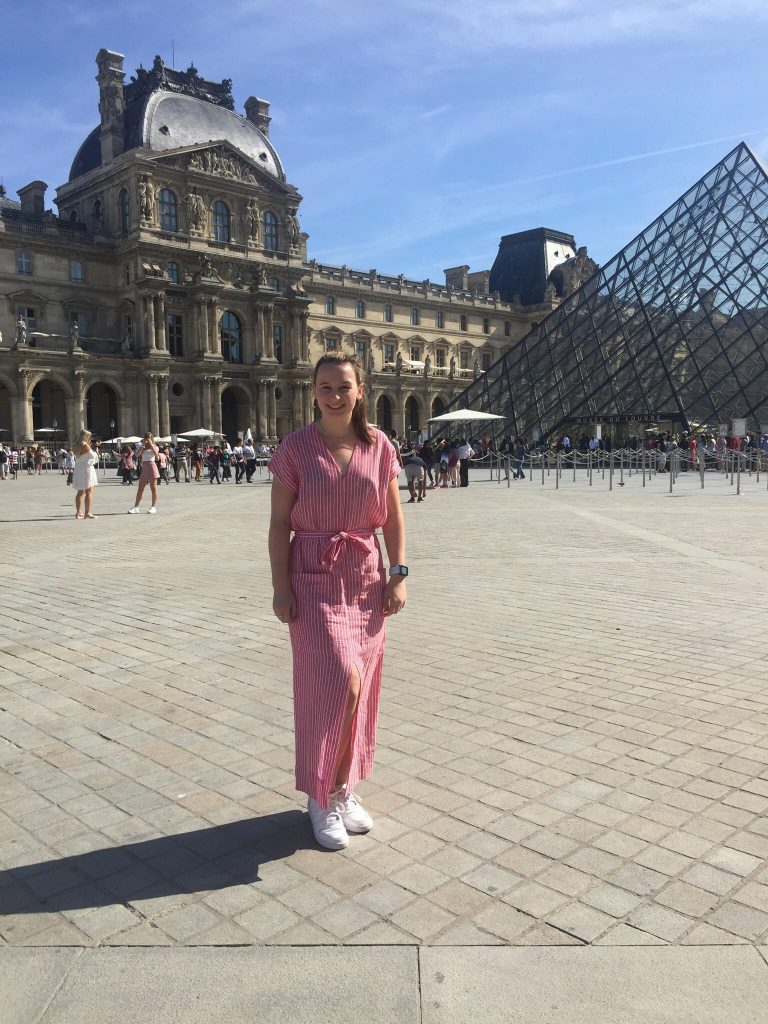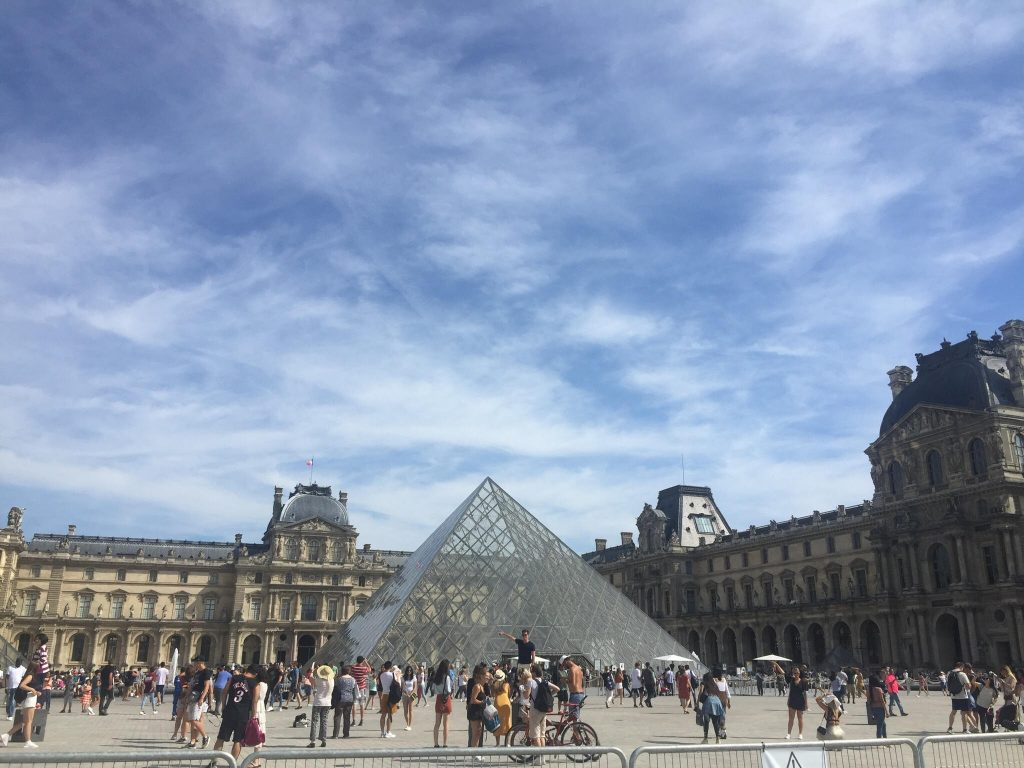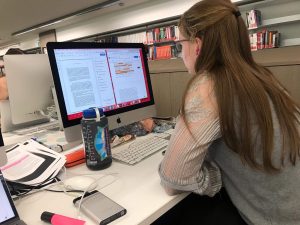Bonjour !
Mes premiers cours à Sciences Po concernaient la méthodologie… mais on s’est demandé, est-il nécessaire d’apprendre encore la méthodologie d’une dissertation, d’une fiche de lecture ou même d’une présentation orale ? Évidemment, on l’a fait pendant longtemps au collège ou certainement au lycée au Royaume-Uni ? La réponse, ABSOLUEMENT. La raison pour laquelle est simple, dans les universités françaises, particulièrement dans les grandes écoles comme Sciences Po, la méthodologie, c’est-à-dire le style obligatoire du travail, est très différente.
Notre prof était sympathique et serviable, en nous donnant la « formule » française qui pourrait être manipulée pour chaque sujet :
L’introduction
I. A. a. b. c, B. a. b. c, C. a. b. c ;
II. A. a. b. c, B. a. b. c, C. a. b. c ;
III. A. a. b. c, B. a. b. c, C. a. b. c.
La conclusion
On voit que la formule est structurée et équilibrée, il faut organiser toutes les parties et sous-parties afin qu’elles puissent marcher dans cette formule (même s’il y aura seulement deux grandes parties et deux sous-parties.) À mon avis, il est difficile de comprendre comment on utilisera cette structure dans tous les sujets, les arguments, les dissertations et les exposés.
 L’autre point d’importance et celui de la problématique, qui est la colonne vertébrale du travail. La problématique, une idée qui fait le lien entre le titre et le travail, est étrangère aux étrangers. Alors, les cours de méthodologie étaient utiles pour pratiquer la façon de trouver et décortiquer une problématique. Par exemple, on a fait un projet sur les monuments, l’art et leurs restaurations à Paris, ce qui nous a conduit à visiter L’Église de Saint-Germain et Le Louvre. J’ai pensé que c’était une opportunité formidable d’apprendre la méthodologie mais en utilisant les vraies études de cas alors qu’on fasse un peu de tourisme au même temps !
L’autre point d’importance et celui de la problématique, qui est la colonne vertébrale du travail. La problématique, une idée qui fait le lien entre le titre et le travail, est étrangère aux étrangers. Alors, les cours de méthodologie étaient utiles pour pratiquer la façon de trouver et décortiquer une problématique. Par exemple, on a fait un projet sur les monuments, l’art et leurs restaurations à Paris, ce qui nous a conduit à visiter L’Église de Saint-Germain et Le Louvre. J’ai pensé que c’était une opportunité formidable d’apprendre la méthodologie mais en utilisant les vraies études de cas alors qu’on fasse un peu de tourisme au même temps !
Ce qui m’intéresse le plus est la nécessité d’une ouverture dans la conclusion. Une ouverture pourrait être un nouvel argument, un nouveau point de vue, mais la distinction est qu’on peut inclure, même utiliser, les actualités pour ce point-là. J’aime le fait qu’on peut revenir à l’origine du titre ou question, et offrir quelque chose d’intéressant et d’utile concrètement dans le monde réel. C’est la raison pour laquelle j’ai commencé d’acheter Le Parisien deux ou trois fois par semaine pour lire dans le métro, afin que je puisse rester au courant avec les idées et les arguments auxquels s’intéressent les français – particulièrement, mes profs qui vont corriger mon travail.
Je pense que l’accent mis sur les actualités dans toutes mes matières à Sciences Po est formidable. On a reçu une conférence par Bruno Patino (qui travaille pour Le Monde) sur les bases des actualités françaises et comment on pourrait les naviguer. D’ailleurs, je parle plus avec les étudiants français parce que je sais davantage sur leur pays et leurs actualités.

Hello !
My first lessons at Sciences Po were about methodology… but we asked ourselves, is it necessary to learn about how to write an essay, a book review, or even how to do an oral presentation again? Obviously, we studied how to do that for a long time at high school or if not, certainly during sixth form back in the United Kingdom? The answer- ABSOLUTELY. The reason is simple, at French universities, particularly at “grandes écoles” like Sciences Po, the methodology, as in the necessary style for our work, is very different.
Our teacher was lovely and helpful, and gave to us the French “formula” which could be manipulated for each subject:
Introduction
I. A. a. b. c, B. a. b. c, C. a. b. c;
II. A. a. b. c, B. a. b. c, C. a. b. c;
III. A. a. b. c, B. a. b. c, C. a. b. c.
Conclusion
We can see here that the formula is very structured, and each section is equally weighted, it is necessary to organise each section and subsection so that they work in this formula (even if that means there will only be two sections and two subsections.) In my opinion, it is difficult to see how we will use this structure in all subjects, arguments, essays and oral presentations.
 The other important point is the “problématique”, which is the spine of the piece of work. The “problématique”, an idea which links the title and the piece of work itself, is quite foreign to foreigners. Therefore, the methodology lessons were useful to practise the way to find and unpick a “problématique”. For example, we did a project on monuments, art and the restoration of these pieces in Paris, which drove us to visit the Church of Saint-Germain and the Louvre. I thought it was a brilliant opportunity to learn the methodology but by using true case studies so that we could do a bit of tourism at the same time!
The other important point is the “problématique”, which is the spine of the piece of work. The “problématique”, an idea which links the title and the piece of work itself, is quite foreign to foreigners. Therefore, the methodology lessons were useful to practise the way to find and unpick a “problématique”. For example, we did a project on monuments, art and the restoration of these pieces in Paris, which drove us to visit the Church of Saint-Germain and the Louvre. I thought it was a brilliant opportunity to learn the methodology but by using true case studies so that we could do a bit of tourism at the same time!
What interested me the most was the need for an “ouverture” in the conclusion. An “ouverture” could be a new argument, a new point of view, but the difference is that we can include, or even utilise current affairs for this particular point. I like the fact that we can go back to the origin of the title or question and offer something interesting and useful in practice in the real world. It is the reason why I started to buy Le Parisien two or three times a week to read on the metro, so that I can stay up to date with the ideas and arguments that interest the French people- especially the teachers who will be marking my work.
I think the emphasis on current affairs in all my subjects at Sciences Po is incredible. There was a conference led by Bruno Patino (who works for Le Monde) on the basics of French current affairs and how we can navigate them. Moreover, I talk to more French students because I know more about their country and news.
